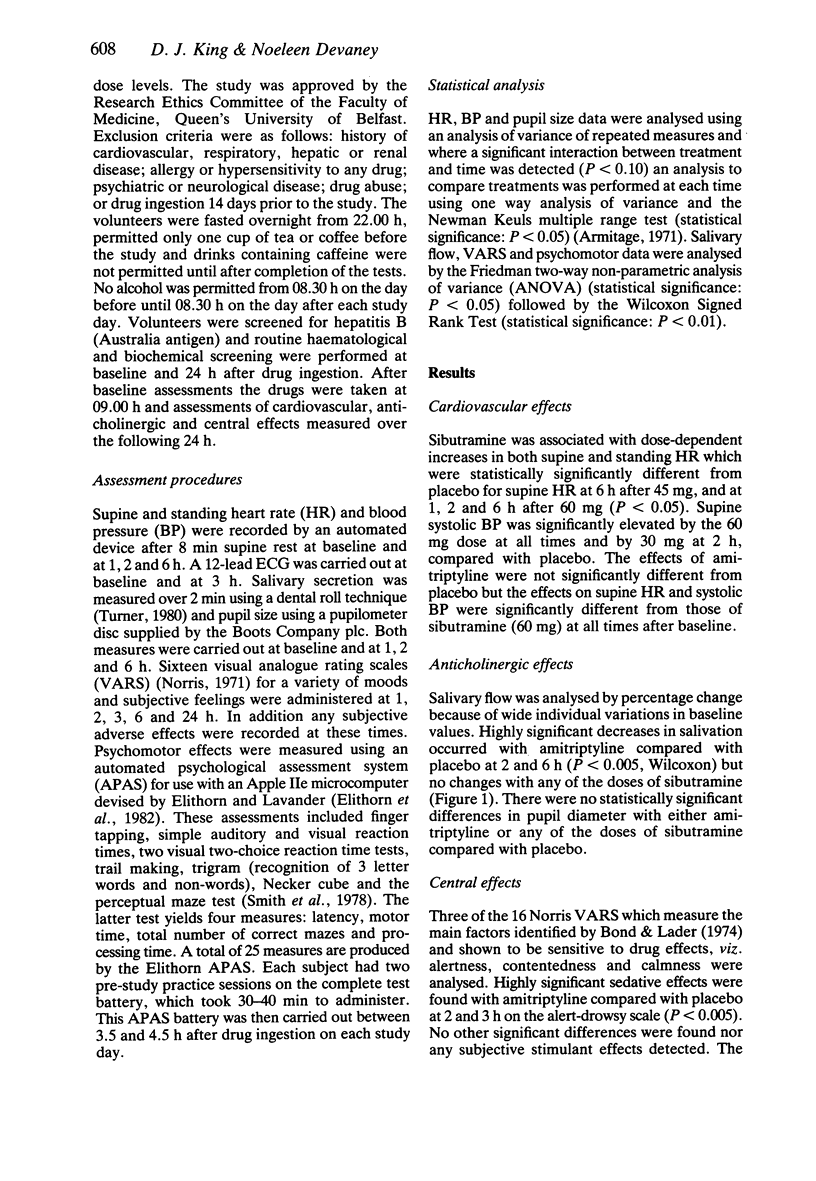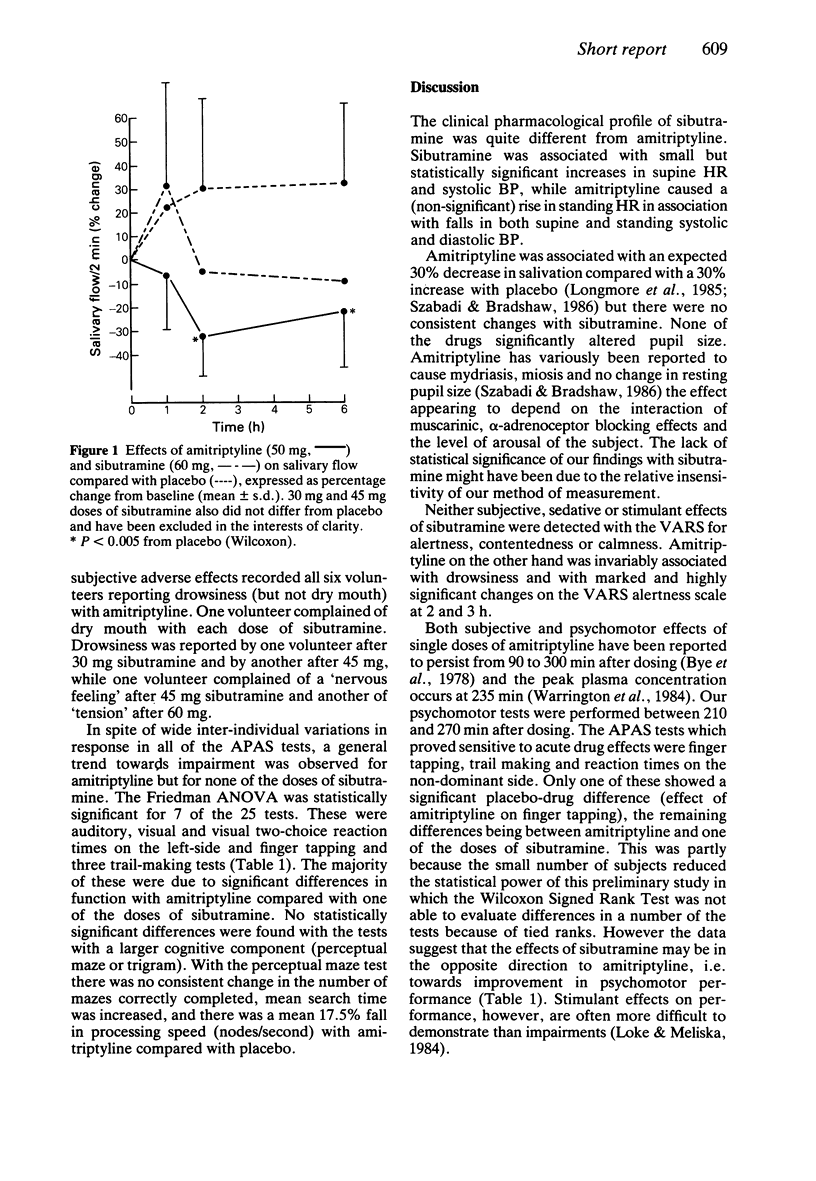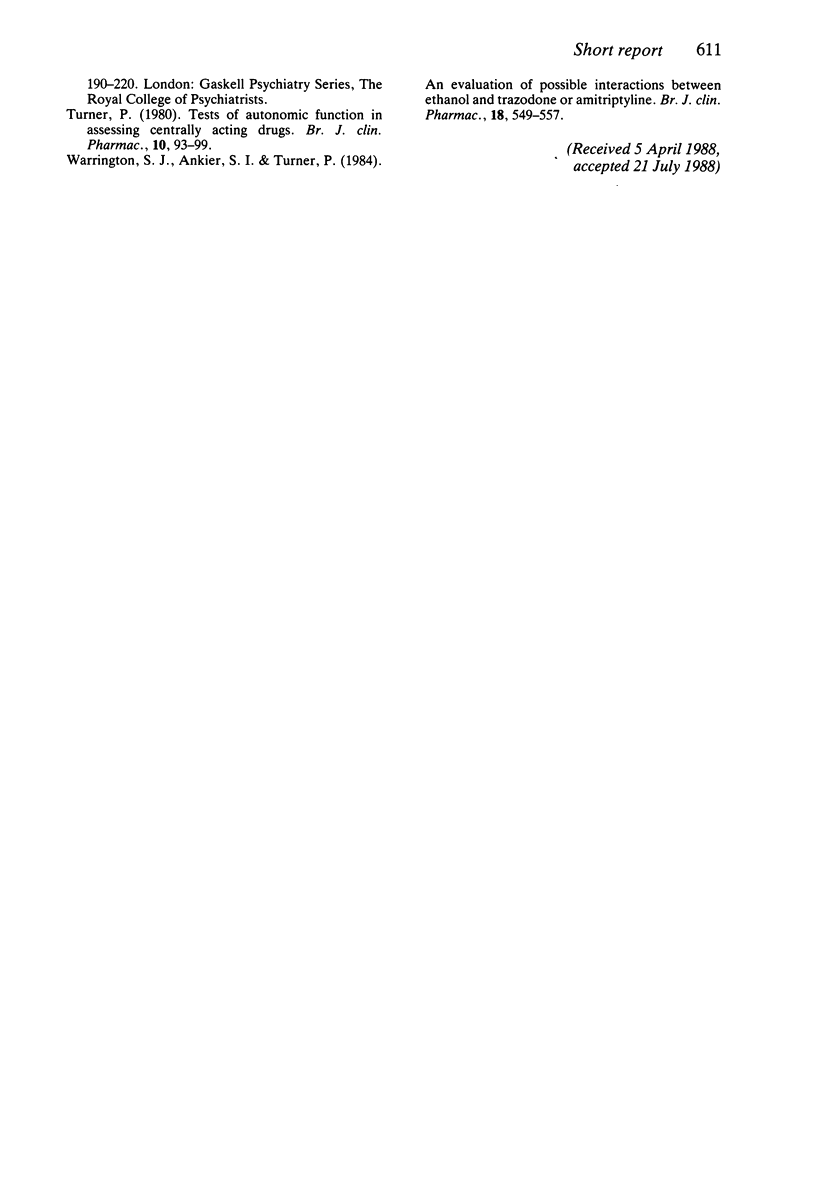Abstract
The cardiovascular, anticholinergic and central effects of single doses of 30, 45 and 60 mg of sibutramine hydrochloride (BTS 54524), a new potential antidepressant, were compared with amitriptyline (50 mg) and placebo given at weekly intervals in a randomised design to six healthy male volunteers. Sibutramine was associated with increases in both supine heart rate and systolic blood pressure at 1, 2 and 6 h after 60 mg (P less than 0.05). Amitriptyline caused a significant 50-60% decrease in salivation compared with placebo at 2 and 6 h but there were no changes with sibutramine. No significant changes in pupil size were detected with either drug. Visual analogue rating scales (VARS) revealed significant drowsiness with amitriptyline but neither sedative nor stimulant effects with sibutramine. Impairments of simple auditory and visual reaction times, visual two-choice reaction time, finger tapping and trail making, measured using an automated test battery, occurred with amitriptyline compared with sibutramine. If sibutramine proves to be an effective antidepressant it should be devoid of anticholinergic or central depressant effects. Chronic dosage studies are indicated to evaluate the clinical significance of its cardiovascular effects.
Full text
PDF




Selected References
These references are in PubMed. This may not be the complete list of references from this article.
- Bye C., Clubley M., Peck A. W. Drowsiness, impaired performance and tricyclic antidepressants drugs. Br J Clin Pharmacol. 1978 Aug;6(2):155–162. doi: 10.1111/j.1365-2125.1978.tb00841.x. [DOI] [PMC free article] [PubMed] [Google Scholar]
- Loke W. H., Meliska C. J. Effects of caffeine use and ingestion on a protracted visual vigilance task. Psychopharmacology (Berl) 1984;84(1):54–57. doi: 10.1007/BF00432024. [DOI] [PubMed] [Google Scholar]
- Longmore J., Szabadi E., Bradshaw C. M. Comparison of the effects of binodaline and amitriptyline on peripheral autonomic functions in healthy volunteers. Br J Clin Pharmacol. 1985 Mar;19(3):295–300. doi: 10.1111/j.1365-2125.1985.tb02646.x. [DOI] [PMC free article] [PubMed] [Google Scholar]
- Norris H. The action of sedatives on brain stem oculomotor systems in man. Neuropharmacology. 1971 Mar;10(21):181–191. doi: 10.1016/0028-3908(71)90039-6. [DOI] [PubMed] [Google Scholar]
- Turner P. Tests of autonomic function in assessing centrally-acting drugs. Br J Clin Pharmacol. 1980 Aug;10(2):93–99. doi: 10.1111/j.1365-2125.1980.tb01724.x. [DOI] [PMC free article] [PubMed] [Google Scholar]
- Warrington S. J., Ankier S. I., Turner P. An evaluation of possible interactions between ethanol and trazodone or amitriptyline. Br J Clin Pharmacol. 1984 Oct;18(4):549–557. doi: 10.1111/j.1365-2125.1984.tb02503.x. [DOI] [PMC free article] [PubMed] [Google Scholar]


